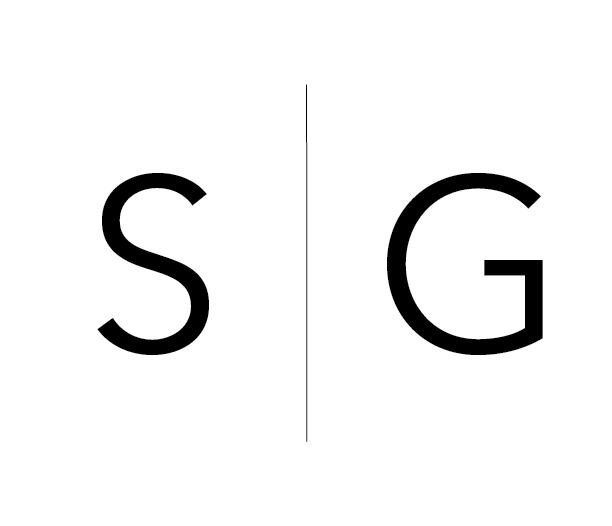Is Homeownership Within Reach? The Housing Affordability Index Can Tell You
The housing affordability index is a useful tool for anyone who has questions about home prices and housing affordability. Here’s how it works, what it does, and what it means for you.
Understanding the Housing Affordability Index: What You Need to Know
When it comes to securing a place to call home, affordability is a critical factor for the average American household. The housing affordability index is a vital metric in this context, providing insights into whether the average American can afford a typical single-family home. This index, created by the National Association of Realtors (NAR), relies on a combination of government census data and proprietary sales data to keep us informed.
Calculating the Housing Affordability Index
To calculate the housing affordability index, NAR uses essential factors such as existing home sales (excluding new construction), mortgage rates, and household income. Here's how it works:
1.Collecting Income Data: NAR gathers data from the U.S. census to determine the median annual household income in various metropolitan areas.
2.Determining Qualifying Income: NAR then calculates a figure known as "qualifying income." This represents the income a household needs to qualify for a mortgage. It's computed by taking the monthly mortgage payment for a typical single-family home and multiplying it by 4 (for the four weeks in a month) and then by 12 (for the twelve months in a year).
Why the multiplication by 4? It aligns with the general rule that housing expenses should account for no more than 25% of monthly income.
Note: NAR's calculations assume a 20% down payment and a 30-year fixed-rate mortgage.
3.Comparing Income Figures: To gauge housing affordability, NAR divides the actual median income by the qualifying income. Then, it multiplies this result by 100 to arrive at the composite housing affordability index number.
Why the Housing Affordability Index Matters
The housing affordability index serves as a quick and clear indicator of whether housing is within reach for most Americans. An index score above 100 indicates greater affordability, while a score below 100 suggests less affordability.
A Real-Life Example
Let's break down this concept with an example from 2021. At that time, the median household income in the U.S. was $70,784. By the fourth quarter of 2021, the median home purchase price stood at $423,600, and mortgage rates ranged between 3.0% and 3.12%.
Calculating the qualifying income:
Monthly mortgage payment for a $423,600 home at 3.05% with a 20% down payment is approximately $1,438.
Monthly income needed to qualify: $1,438 x 4 x 12 = $69,024.
Comparing actual income to qualifying income:
$70,784 (actual median income) / $69,024 (income needed to qualify) = 1.025
Multiplying by 100:
1.025 x 100 = 102.5
In this example, the average American household had approximately 102.5% of the income required to qualify for a mortgage on a typical single-family home, indicating affordability at that time.
Current Housing Affordability Challenges
However, the landscape has changed since 2021. Housing affordability in the U.S. has reached an all-time low due to rising mortgage rates, even though wages have increased by about 5%—struggling to keep pace with inflation.
For instance, if we recalculate the index using the current interest rate of 7.55%, the affordability index plunges from 102.5 to 61.9. This means that a shift in mortgage rates alone has significantly impacted housing affordability, dropping the average U.S. household's ability to buy a home from 102.5% to just 61.9%.
While these numbers are illustrative, they reflect the challenges many Americans face in the housing market. Mortgage rates have surged, and the median monthly mortgage payment has hit an all-time high of $2,605, a staggering 19% increase from the previous year.
A Glimpse of Hope: Wage Growth and Inflation
Amid these concerns, there's a ray of hope. Inflation, which has been eroding purchasing power, appears to be slowing down. In June, real wage growth—factoring in both wages and inflation—outpaced inflation for the first time in over two years. While these gains may seem modest, they provide relief for those aspiring to buy a home in the near future.
As inflation recedes, your paycheck's purchasing power grows, allowing for more savings. Additionally, the long-term outlook for mortgage rates becomes more favorable as inflation cools, and the Federal Reserve potentially eases key interest rates. So, if owning a home is your goal, don't lose hope—better times may be on the horizon.
Wondering if you can afford a home in our market?
Get in touch. National numbers are a great measuring stick to see how the overall economy and housing market are doing, but they don’t account for local home values and your personal financial situation.
Frequently Asked Questions:
Question: What is the Housing Affordability Index?
Answer: The Housing Affordability Index is a metric created by the National Association of Realtors (NAR) to gauge whether the average American household can afford a typical single-family home. It considers factors like income, existing home sales, and mortgage rates.
Question: How is the Housing Affordability Index calculated?
Answer: The index is calculated using data on median household incomes, monthly mortgage payments, and other factors. NAR computes a "qualifying income" by multiplying the monthly mortgage payment by 4 (for weeks in a month) and then by 12 (for months in a year).
Question: What's the purpose of Qualifying Income in housing affordability?
Answer: Qualifying Income represents the income a household needs to qualify for a mortgage on a typical single-family home. It helps determine whether a household can afford homeownership.
Question: How is the Composite Housing Affordability Index number derived?
Answer: To arrive at the Composite Housing Affordability Index, NAR divides the actual median income by the qualifying income and then multiplies the result by 100. A score above 100 indicates greater affordability, while a score below 100 suggests less affordability.
Question: What's the significance of mortgage rates in housing affordability?
Answer: Mortgage rates play a vital role in housing affordability. Even a slight change in rates can significantly impact whether the average American household can afford to buy a home.
Question: How have recent changes affected housing affordability in the U.S.?
Answer: Housing affordability in the U.S. has declined due to rising mortgage rates, despite a modest increase in wages. The median monthly mortgage payment has reached an all-time high, making homeownership more challenging.
Question: Is there any hope for improved housing affordability?
Answer: Yes, there is hope. As inflation slows down and real wage growth outpaces inflation, Americans may see improvements in their purchasing power. Additionally, the long-term trend for mortgage rates could become more favorable.
Question: What role does the Federal Reserve play in housing affordability?
Answer: The Federal Reserve's policies, including changes in key interest rates, can influence mortgage rates. Therefore, the Federal Reserve's actions have a direct impact on the affordability of homes.
Question: Why is it essential to understand the Housing Affordability Index in 2023?
Answer: Understanding the Housing Affordability Index is crucial in 2023 because it helps individuals assess whether homeownership is within reach given the current economic conditions, including mortgage rates and income levels.
Question: What is the relationship between inflation and housing affordability?
Answer: Inflation can erode purchasing power, making it harder for households to afford homes. Monitoring inflation trends is vital for understanding housing affordability dynamics.
Glossary of Key Terms
- Housing Affordability Index: A metric created by the National Association of Realtors (NAR) to assess whether the average American household can afford a typical single-family home. It combines data on income, existing home sales, and mortgage rates to provide insights into housing affordability.
- Qualifying Income: The income required for a household to qualify for a mortgage on a typical single-family home. It is calculated by multiplying the monthly mortgage payment by 4 (for weeks in a month) and then by 12 (for months in a year).
- Median Household Income: The income level that falls exactly in the middle of a distribution of household incomes, with half of households earning more and half earning less.
- Existing Home Sales: The sale of pre-owned homes, not including new construction properties. This data is used in the calculation of the Housing Affordability Index.
- Mortgage Rate: The interest rate charged by a lender on a home loan. Mortgage rates significantly impact housing affordability.
- Down Payment: A percentage of the home's purchase price that a buyer pays upfront when securing a mortgage. A common standard is a 20% down payment.
- Composite Housing Affordability Index: The final index score that indicates whether housing is more or less affordable. A score above 100 suggests greater affordability, while a score below 100 indicates less affordability.
- Inflation: The rate at which the general level of prices for goods and services rises, causing a decrease in the purchasing power of a currency. Inflation can impact wage growth and, subsequently, housing affordability.
- Purchasing Power: The value of a currency measured by the quantity of goods or services it can buy. It's influenced by both income levels and inflation rates.
- Federal Reserve: The central banking system of the United States, responsible for implementing monetary policy. Changes in the Federal Reserve's policies can influence mortgage rates and, consequently, housing affordability.
- Real Wage Growth: Wage growth adjusted for inflation, providing a measure of how effectively income keeps pace with rising prices.
- Key Interest Rate: The benchmark interest rate set by the Federal Reserve, which has a significant impact on various financial markets, including mortgage rates. Changes in this rate can influence housing affordability.
- Homeownership: The state of owning a residential property. Housing affordability is a critical factor in achieving homeownership.



